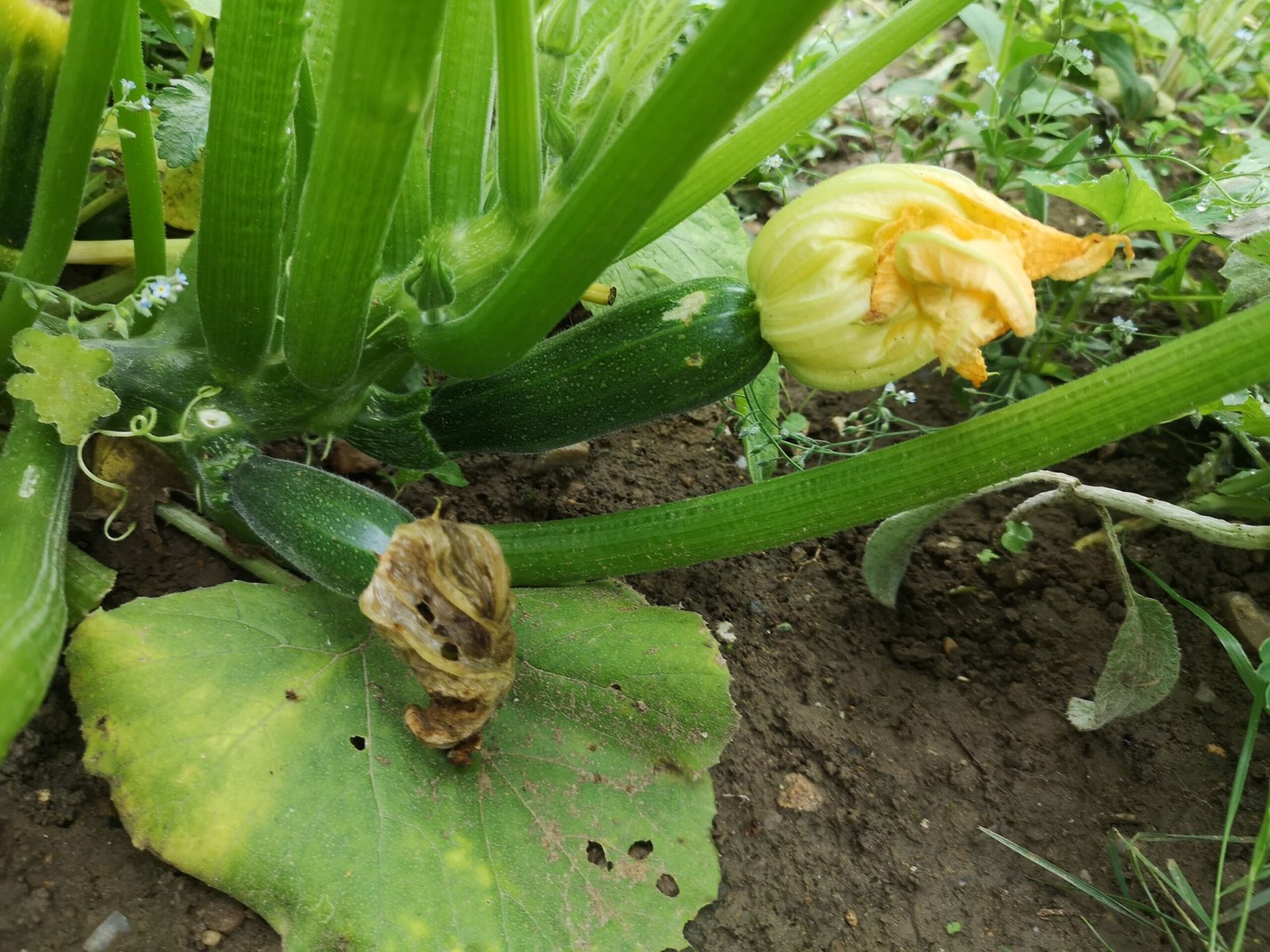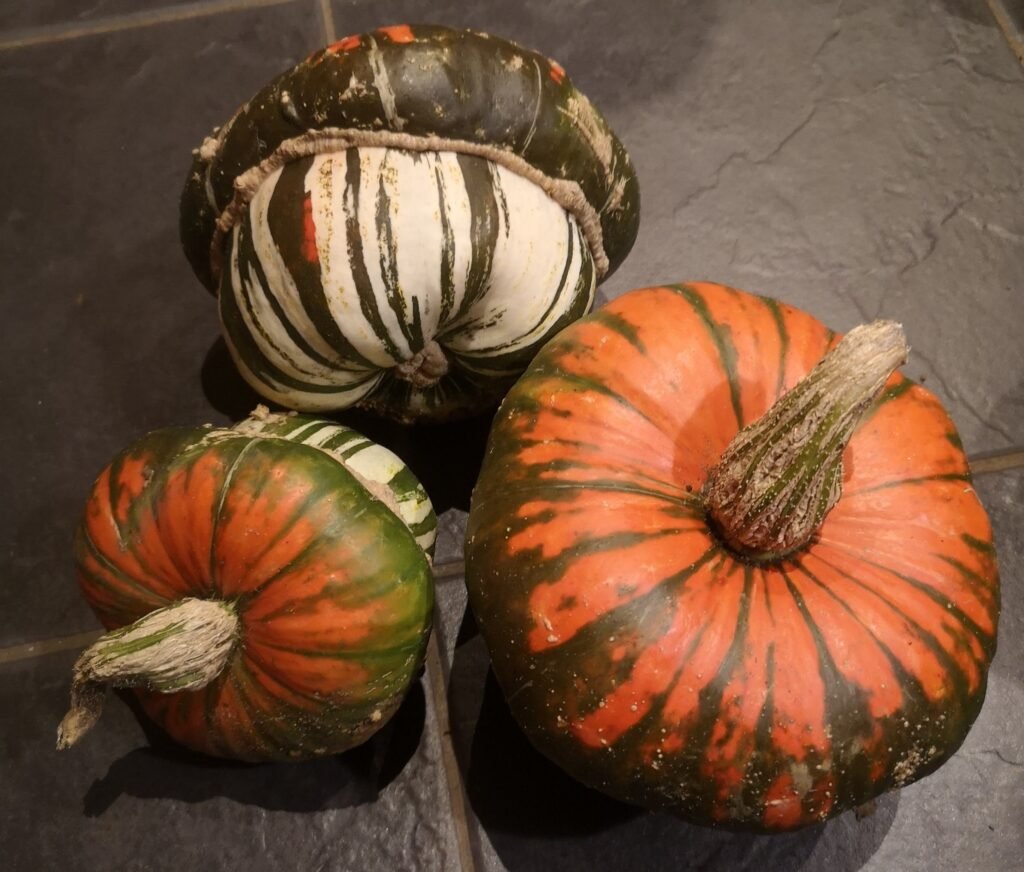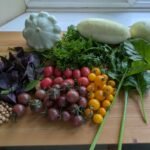Squashes, or curcubits, are a group of flowering plants that produce edible fruits. The squashes that I’ve chosen for this series are cucumbers, courgettes, and winter squashes. These don’t need to go into a specific location in a crop rotation plan.
Cucumber
When to plant
If you are sowing seeds inside, which is usually recommended, then sow seeds mid-February to mid-March if your cucumbers will be growing in a heated greenhouse. Sow seeds in April if they will be growing in a polytunnel or unheated greenhouse. Sow seeds in late April if the plant will be growing outside.
If you are sowing seeds outside, which you can do with outdoor varieties, then sow them in late May or early June.
Where to plant
Plant seeds inside, one per small pot or in modular trays, potting them on when necessary.
If you will be growing cucumbers up a trellis, then they want to be spaced 1 ft apart, somewhere where they can grow up a support, such as bamboo canes, fence, trellis, or anything else that the tendrils can wrap around. Otherwise space them 3-4 ft apart, where there is space for them to trail along the ground.
You’ll want to transplant cucumbers when the temperature won’t drop below around 12°C. If you are growing them in a heated greenhouse then this can be as early as late March. If you are growing them in a polytunnel or unheated greenhouse, then this will probably be around late May. If you are growing them outside then it will probably be from early June onwards, but will depend on where you live.
If planting seeds outside, sow the seeds into their final growing position, 1/2 inch deep. Protect with fleece or a cloche.
Cucumbers don’t grow well next to other squashes. They also won’t do well with brassicas and nightshades.
They grow well with peas, onions, lettuce, marigolds and borage, among other plants.
Growing
Fruits will be more susceptible to pests, like slugs and snails, if they are trailing on the ground.
When watering, avoid getting the leaves wet, and don’t water too frequently.
Check the chosen variety for details, but many greenhouse varieties produce only female flowers (they have a tiny fruit behind the flower). These do not want pollinating otherwise the fruit will be bitter. Remove any male flowers (no fruit behind them) that form. Outdoor varieties will have both male and female flowers. The female flowers, with the fruit behind them, want pollinating, and the male flowers want removing.
Harvesting
You can eat the flowers either raw or cooked.
Cucumbers will be ready to pick from around July, and possibly harvested until as late as October. If you are growing small varieties, then they will be ready when around 4 inches long, whereas if you are growing full-sized varieties, they will be ready at about 6-8 inches long. They should be uniformly green and firm.
To harvest cucumbers, cut the stem attached to the fruit with a sharp knife or secateurs. They are fast growing, and regular picking encourages more fruit.
Courgette
When to plant
If you are sowing seeds inside, which is usually recommended, then sow seeds in April or early May.
If you are sowing seeds outside, then do so in late May or early June.
Where to plant
Plant seeds inside, 1/2 inch deep, on their side, one per small pot or in modular trays. Pot them on when necessary. Plant seedlings outside after danger of frost has passed.
There are two types of courgette plants, bush and trailing. Check which variety you are growing.
Both bush and trailing varieties want planting roughly 3 ft apart. Plant trailing varieties where there is space for them to trail along the ground, or space for them to trail up something.
Growing
Fruits will be more susceptible to pests, like slugs and snails, if they are trailing on the ground.
When watering, avoid getting the leaves wet. Frequent watering may be needed.
Treat courgette flowers differently to cucumbers. Courgettes are usually pollinated by insects, and they collect pollen from the male flowers and take it to the female flowers.
Harvesting
Courgettes should be ready to start harvesting 6-8 weeks after planting.
It’s best to harvest courgettes when they are young and tender, usually when they are around 4-5 inches long if a long variety. Regular picking will encourage more fruit to grow.
You can also eat courgette flowers, but make sure you leave some male flowers to pollinate the fruits.


Winter Squash
When to plant
It’s recommended to sow seeds inside. Sow seeds from mid-April onwards.
Where to plant
Plant seeds inside, 1/2 inch deep on their side, one per small pot or in modular trays, potting them on when necessary. Plant seedlings outside after danger of frost has passed.
Both bush and trailing varieties want planting roughly 3ft apart. Plant trailing varieties where there is space for them to trail along the ground, or space for them to trail up something.
Growing
Fruits will be more susceptible to pests, like slugs and snails, if they are trailing on the ground.
When watering, avoid getting the leaves wet. Frequent watering may be needed, especially when fruiting.
It can be a good idea to place something below larger winter squash fruit, such as a brick, slab, or wooden board, to prevent rotting. Fruits being exposed to full sun can aid ripening.
You can trail plants up supports, but make sure they are sturdy enough to support the plants and the fruit.
These are pollinated the same way that courgettes are.
Harvesting
You can harvest winter squashes as soon as they are ripe. But if you want to store them, then they can be left to ripen further, keeping them on the plant as long as possible, but picking them before the first frost. This can allow you to store them for months in a cool place (like a pantry).
You can also eat winter squash flowers, but make sure you leave some male flowers to pollinate the fruits.


I am proud to be affiliated with JustSeed, a company that I have bought seeds from for a few years now. I believe in what they are doing over there, and if you are going to buy seeds, garden tools, or seedlings, then please consider checking them out and using my link below to do so. Thank you for supporting me.






Leave a Reply